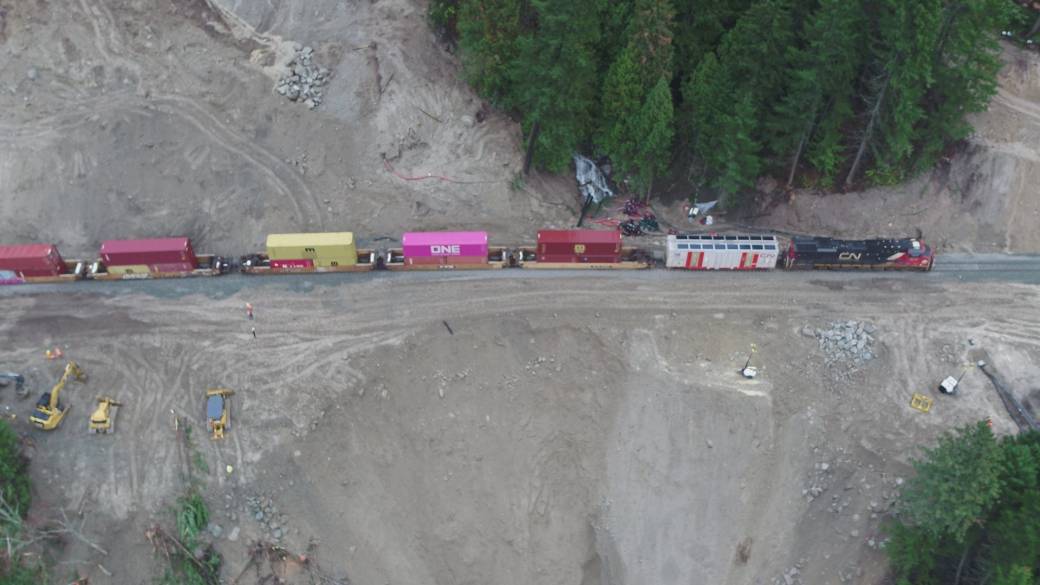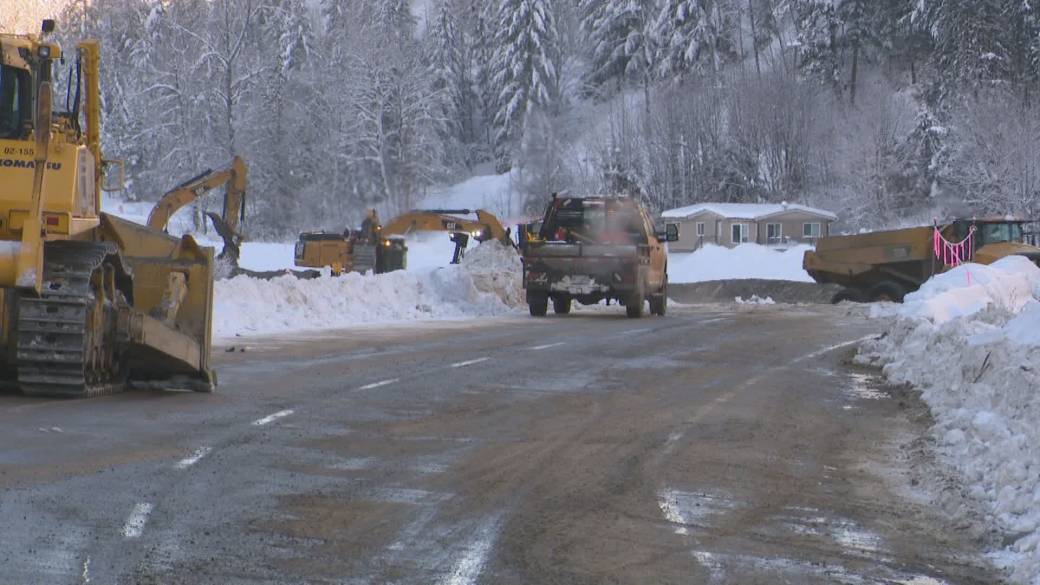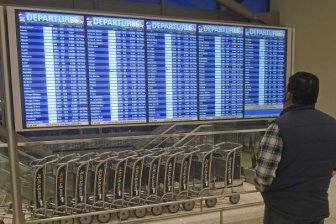Economic growth in British Columbia will face erosion from recent floods and landslides that crippled transport links, but resistance from government and industry to keep supply chains open limits the damage, says an economist.
Vital road, rail and port links were cut for weeks as a series of record rains last month flooded southern British Columbia, inundating roads and farms and forcing some 15,000 people to evacuate their homes.
Ken Peacock, senior vice president and chief economist at the British Columbia Business Council, said he estimated the climate disaster would cause a loss of economic output for the province of between $ 250 million and $ 400 million.
“We’re thinking maybe the direct impact of closing the roads, closing the rails, the Trans Mountain pipeline going down and then the retail impacts, we’re thinking maybe three-tenths of a percentage point,” he said. saying. “It would reduce growth by 2021.”
Read more:
Floods, fires and heat: a year of unprecedented climatic extremes in British Columbia
He said the economic impact estimate does not forecast repair and reconstruction costs, which the government says will be huge.
Finance Minister Selina Robinson recently said that she will provide a clear picture of the province’s finances in her February budget. Last month, he said British Columbia was heading for a strong economic recovery after a 3.4 percent decline in 2020, but uncertainties remain due to the COVID-19 pandemic and the costs of flood damage.
Earlier this month, Robinson said the province’s Economic Forecasting Council predicted economic growth in British Columbia of 5.3% in 2021 and 4.2% in 2022.
Peacock said the economic impact of the floods would have been felt more if the province was not in a period of economic recovery.
“So three tenths of a percentage point doesn’t feel or sound like a lot when talking about four percent growth. But if we are in our normal world of two percent to two and a half percent growth, then three-tenths of a percent is much more significant, “he said.

The closure of roads and rail lines due to flooding and limited access to port facilities in Vancouver sent alarms to government and industry to quickly repair infrastructure and keep supply chains running, even if it meant moving goods on different roads. or rail routes, Peacock said. .
“One thing that has become very clear to the government and policy makers is that this has not been a kind of warning, but a very clear indicator of how dependent we are on some infrastructure and transport connections,” he said.
The four-lane Coquihalla Highway, the main trucking route to and from Vancouver, reopened to commercial traffic on December 20 after flooding and landslides damaged 20 sections of the highway, including seven bridges.
Read more:
United Way Raises $ 2 Million for British Columbia Flood Victims and Launches New Christmas Appeal
Officials at the port of Vancouver, Canada’s largest, said rail service is flowing smoothly again after major disruptions due to damaged rail lines.
“While the reopening of the Coquihalla Highway will provide renewed access for truck freight throughout the interior of British Columbia and into Alberta, the majority of volumes in all sectors moving to and from the port move by rail, “Vancouver Fraser Port Authority said in a statement. “Right now, the two railroads that serve the port run constantly between Vancouver and Kamloops.”
James Thompson, vice president of western operations for Canadian National Railway, said access to Vancouver Harbor was cut off from November 14 to December 4 due to 58 damaged sites in the Fraser Canyon area from Ashcroft to Yale.

It took 400 employees and 110 teams working 24 hours a day, seven days a week to repair the tracks, and the biggest job was a major landslide in Fraser Canyon on Jackass Mountain, he said.
“We put in 282,000 yards of rock to fill in what took away in the landslide and storm, and to put it in rough terms that are easy to understand, it’s roughly 25,000 18-wheel loads of ballast rock, breakwater, and other materials at that location. Thompson said.
CN was effectively closed from Kamloops to Vancouver, forcing the company to shift some of its traffic to Prince Rupert, he said.
Thompson said the storm was a one-time event. But, which came just a few months after wildfires in the same area that closed rail service, only served as a reminder of the power of climate in the age of climate change.
“We try to plan and build contingencies and resilience in our network. But at the end of the day, I can’t say it better than this: the railroad is an outdoor sport and Mother Nature makes the rules, ”he said.
© 2021 The Canadian Press
Reference-globalnews.ca

